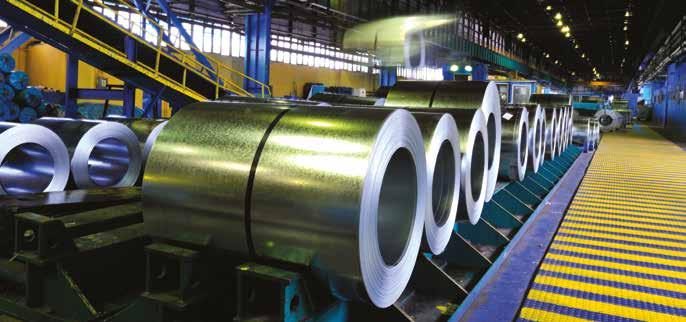
2 minute read
Key Sustainability Benefits of LSF Construction
LSF construction has many benefits including cost-effective structures, durability, site safety, quality, predictability of delivery and versatility. However, in a world where a green, sustainable way of living/operating is essential the sustainable nature of LSF offers many benefits which include:
• Speed of build: Productivity and the speed of construction on the build site due to components being manufactured offsite reduces the impact on the local environment.
Faster construction brings an earlier watertight envelope, which allows earlier access to follow on trades. This leads to reduced build programmes of circa 20% reduction compared to traditional construction. • Energy/Thermal performance: Embodied
Carbon Assessments show Operational
Energy is 67% of the overall carbon total – the high levels of thermal insulation and airtightness achieved in LSF construction assist greatly in this area. • Reduced Carbon Emissions: Substantial reduction (circa 20%) in the overall carbon footprint of a building. • Recycled Content: LSF structures are built using steel with a high level of recycled content – circa 40% recycled content based on manufacturers data. • End of Life Recyclability: It is well known that steel is one of the world’s most recycled materials with a potential recovery/re-use factor in excess of 90%, and there is no waste at all. Steel components can also be unbolted/disconnected and dismantled for reuse in the future. • Lightweight: Light gauge framed steel structures are substantially lighter than traditional steel framed buildings allowing a significant reduction in the construction of foundations, circa 70% reduction relative to concrete and masonry according to SCI data. • Production waste: Steel wastage is minimised by the efficient use of materials. In factory production, all steel off-cuts and drill swarf are sent for re-cycling back into new steel components. • Construction Site Waste: Site waste is virtually eliminated using pre-engineered and fabricated product so contributes to zero waste targets on site. • Design for Reuse: This may be a new discipline to some designers – however, the process is not difficult. For example, deconstructed sections are inspected and tested to verify their dimensional and strength properties. The section is then shot or sandblasted to remove any coatings, refabricated and primed to the requirements of the new project. Lightweight structures can be modified, easily extended and repurposed as they can be dis-assembled. • Durability: Light steel walls and floors in warm frame applications have a predicted design life of up to 250 years. • Reduced transportation: As the volume of material which can be included on a typical delivery is increased with LSF, there are less vehicle deliveries to the project (reduced by typically 60%). This assists in reducing the impact on the environment and minimises pollution.
To maximise the benefits of offsite construction, early identification of the type of offsite system to be used leads to more cost-efficient construction. The benefits of early incorporation of LSF technology is noted in LSFA publication ‘Specification & Engineering Guide for Light Steel Frame Construction’. This Guide clearly demonstrates that LSF is the product to choose. Refer to LSFA document for more detail.




